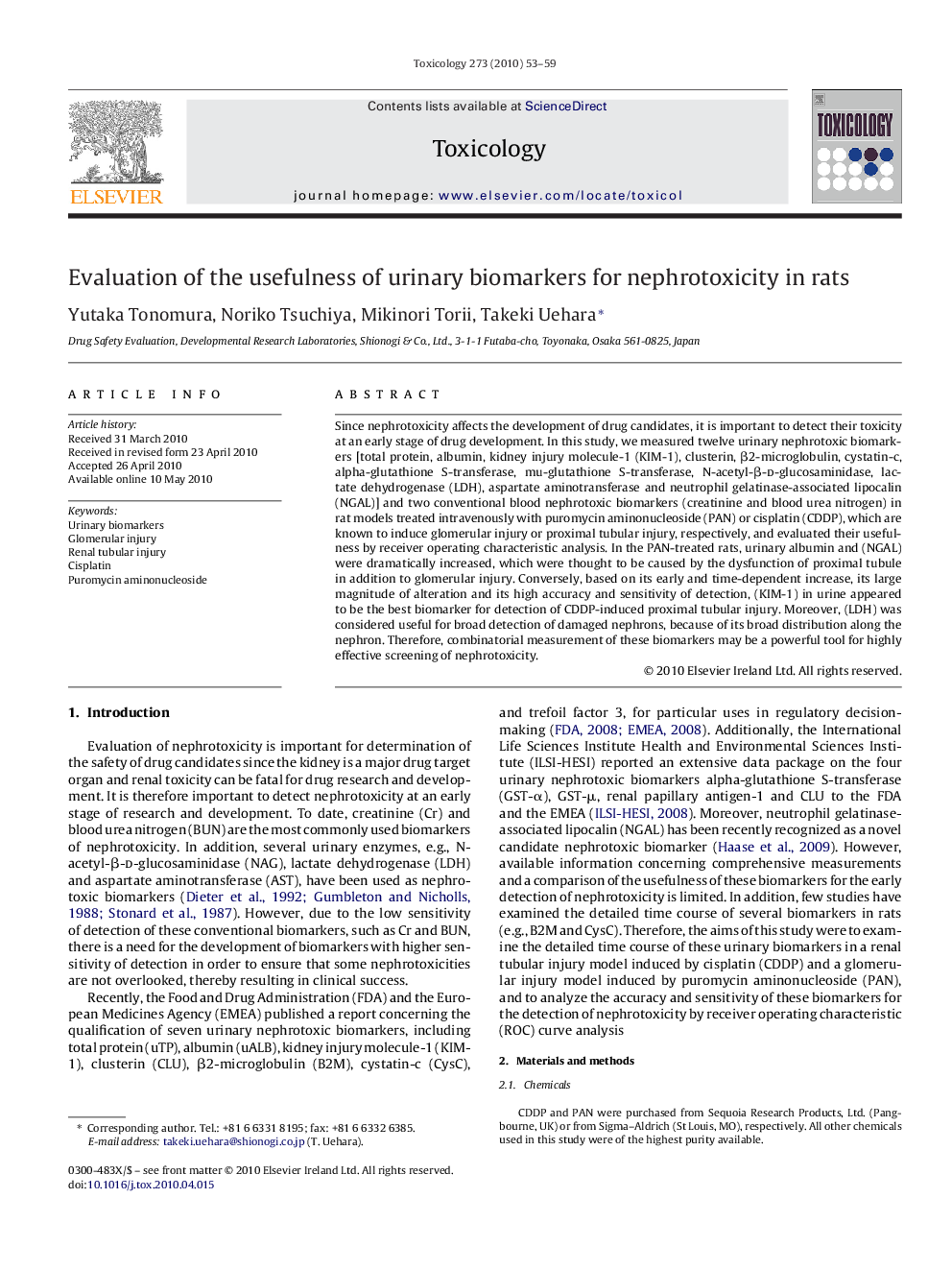| Article ID | Journal | Published Year | Pages | File Type |
|---|---|---|---|---|
| 2596352 | Toxicology | 2010 | 7 Pages |
Since nephrotoxicity affects the development of drug candidates, it is important to detect their toxicity at an early stage of drug development. In this study, we measured twelve urinary nephrotoxic biomarkers [total protein, albumin, kidney injury molecule-1 (KIM-1), clusterin, β2-microglobulin, cystatin-c, alpha-glutathione S-transferase, mu-glutathione S-transferase, N-acetyl-β-d-glucosaminidase, lactate dehydrogenase (LDH), aspartate aminotransferase and neutrophil gelatinase-associated lipocalin (NGAL)] and two conventional blood nephrotoxic biomarkers (creatinine and blood urea nitrogen) in rat models treated intravenously with puromycin aminonucleoside (PAN) or cisplatin (CDDP), which are known to induce glomerular injury or proximal tubular injury, respectively, and evaluated their usefulness by receiver operating characteristic analysis. In the PAN-treated rats, urinary albumin and (NGAL) were dramatically increased, which were thought to be caused by the dysfunction of proximal tubule in addition to glomerular injury. Conversely, based on its early and time-dependent increase, its large magnitude of alteration and its high accuracy and sensitivity of detection, (KIM-1) in urine appeared to be the best biomarker for detection of CDDP-induced proximal tubular injury. Moreover, (LDH) was considered useful for broad detection of damaged nephrons, because of its broad distribution along the nephron. Therefore, combinatorial measurement of these biomarkers may be a powerful tool for highly effective screening of nephrotoxicity.
